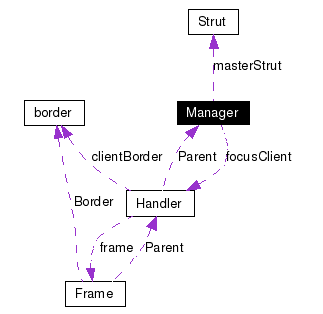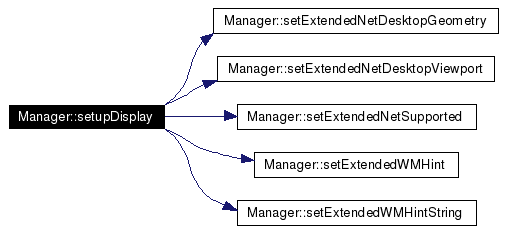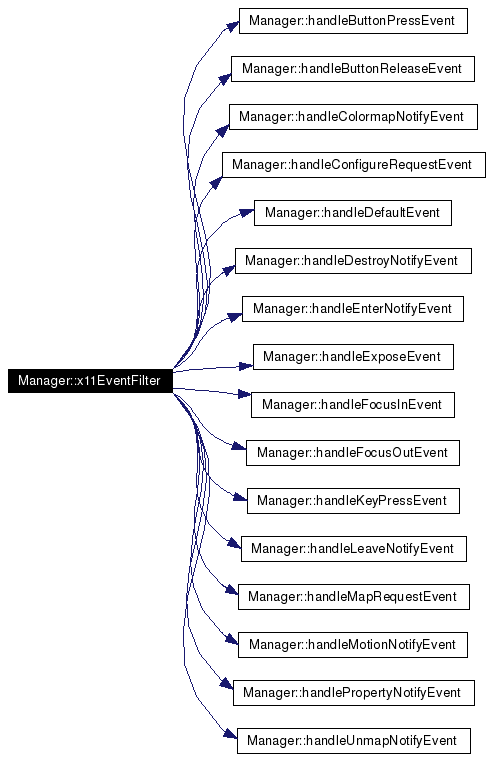
#include <manager.h>
Collaboration diagram for Manager:

|
||||||||||||
|
The arguments argc and argv are not used here, but are passed on to QApplication. Here is the call graph for this function:  |
|
|
|
|
|
|
|
|
|
|
|
|
|
|
|
|
|
|
|
|
If the window already is a client, i.e. is found in the Client map, the handling of this event is done in the corresponding Handler object. Otherwise the request is delegated back to the window so it can use it.
In any case returns |
|
|
|
|
|
|
|
|
|
|
|
|
|
|
|
|
|
|
|
|
|
|
|
|
|
|
If the requesting window already is a client, the corresponding Handler object will handle it. Otherwise a new Handler object is created and added to the Client map.
Returns
|
|
|
|
|
|
If it is a known client as found in the Client map, the event is handled by the corresponding Handler object. In this case
Otherwise nothing is done and |
|
|
|
|
|
|
|
|
|
|
|
Function to scan for existing windows at startup. Existing windows will be mapped as clients and will be shown if necessary. |
|
|
|
|
|
|
|
|
|
|
||||||||||||||||
|
|
|
||||||||||||||||
|
|
|
|
The name of this member is somehow misleading. It is really used to set up the basic members we need to manage windows. It also sets up a decent cursor - I think a window manager should do this: I for one don't like that ugly big fat X shaped default cursor.
Here is the call graph for this function:  |
|
|
Here is the call graph for this function:  |
|
|
This is where the heart beats. x11EventFilter is reimplemented from QApplication. It is merely a dispatcher to enable more specialized functions to take a closer look at every XEvent. It is a boolean function, to tell QApplication if we have eaten this event ourselfes or expect Qt to do something about it.
Returns Here is the call graph for this function:  |
|
|
|
|
|
|
|
|
|
|
|
|
|
|
|
|
|
|
|
|
|
|
|
|
|
|
|
|
|
|
|
|
|
|
|
|
|
|
|
|
|
|
|
|
|
|
|
|
|
|
|
|
|
|
|
|
|
|
|
|
|
|
|
|
|
|
|
|
|
|
|
|
|
|
|
|
|
|
|
|
|
|
|
|
|
|
|
|
|
|
|
|
|
|
|
|
|
|
|
|
|
|
|
|
|
|
|
|
|
|
|
|
|
|
|
|
|
|
|
|
|
|
|